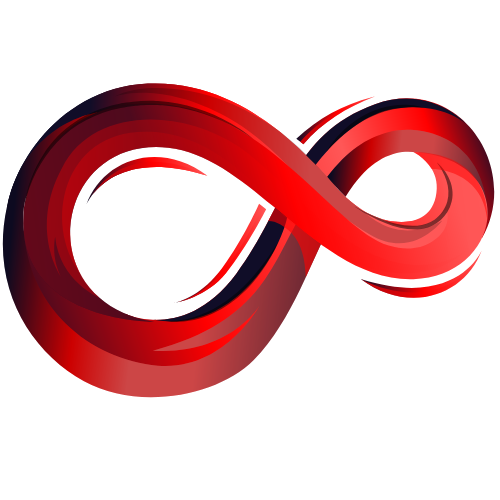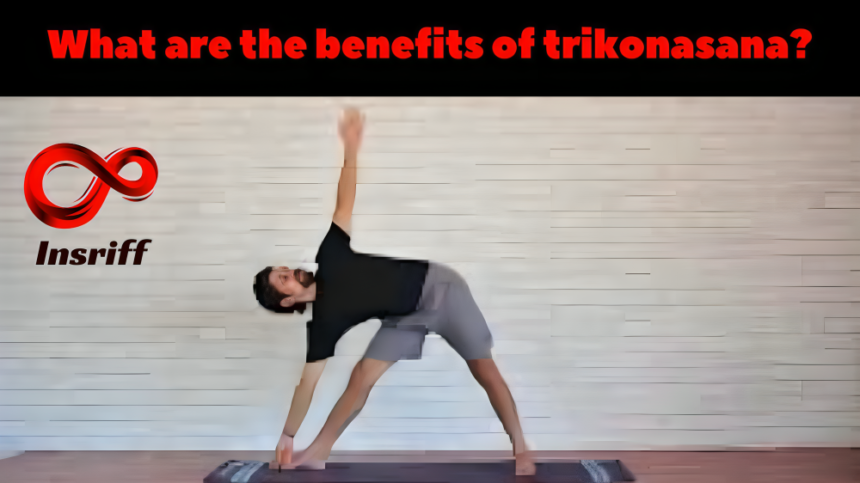Trikonasana, or Triangle Pose, is a foundational yoga posture that cultivates balance, strength, and flexibility. With feet huge aside, practitioners increase one arm toward the sky and the alternative closer to the floor, forming a triangular shape with the body. The benefits of trikonasana are unlimited.
It is derived from the Sanskrit words”tri,” which means three, and “Kona,” meaning perspective. Trikonasana represents the form of a triangle, grounding practitioners into a posture that symbolises stability and harmony.
This asana engages muscular tissues throughout the body, particularly in the legs, middle, and spine, while promoting mental stability and relaxation. Trikonasana enhances posture, balance, and blood circulation, making it a helpful addition to any yoga exercise.
As a health professional, I will guide you through the complete information about Trikonasana, its types, benefits in both men and women, contraindications, and a few pro suggestions. So, Let’s start our journey.
Types of Trilonsana
The eight main types of Trikonsana are:
- Utthita Trikonasana
- Bimkam Trikonasana
- Baddha Trikonasana
- Baddha Parivritta Trikonasan
- Parivritta Trikonasana
- Supta Trikonasana
- Supta Parivrtta Trikonasana
- Supta Utthita Trikonasana
Utthita Trikonasana is the first type of trikonasana in which the body is in extended triangular Pose. In the classical model, the body is prolonged sideways, with one arm reaching up closer to the sky and the opposite arm reaching down towards the floor, forming a triangle shape.
Trikonasana is the 2nd type, known as Bikram’s Triangle Pose. It may also refer to the classical version or a particular variant practised within the Bikram Yoga collection.
Baddha Trikonasana is also known as Bound Triangle Pose. In this transformation, the hands are clasped in a bound position at the back of the body while appearing as Trikonasana.
Baddha Parivritta Trikonasana is a Bound Revolved Triangle Pose, and it involves the binding of the arms in a revolved version of Trikonasana.
Parivritta Trikonasana is a Revolved Triangle. In this pose, the torso is twisted whilst acting Trikonasana. One hand rests on the ground or a block while the other reaches upward, creating a twist inside the backbone.
Supta Trikonasana is a reclined version of Trikonasana, in which the practitioner lies on their lower back and extends their legs and arms to form a triangle form. It is the best asana for all men and women.
Supta Parivrtta Trikonasana would be a reclined model of Parivrtta Trikonasana, regarding a reclined twist while extending the legs.
Supta Utthita Trikonasana is the last type of yoga in our category. It would likely be a reclined variation of Utthita Trikonasana involving mendacity down while extending the arms and legs in a triangular shape.
Read the Benefits of Ardha Matsyndrasana for men and women.
Benefits of Trikonasana for Men
Trikonasana has five main benefits for men that support them in maintaining a happy and healthy lifestyle.
Improves Flexibility and Mobility
Trikonasana entails a deep stretch alongside the edges of the body, groin, and hamstrings, increasing flexibility and mobility in typically tight regions.
Strengthens Core Muscles
The triangular form shaped in Trikonasana engages the middle muscle tissues, assisting in maintaining and strengthening, which is essential for helping proper posture and stopping lower back aches.
Improves Digestion and Elimination
The twisting movement in Trikonasana stimulates the belly organs, promoting digestion and reducing discomfort associated with indigestion or constipation.
Enhances Balance and Stability
Trikonasana demands stability and improves proprioception, lowering the risks of accidents from falls or unexpected moves.
Reduces Stress and Anxiety
Trikonasana encourages deep breathing and awareness recognition also relaxes and calms our thoughts and helps in anxiety management.
Benefits of Trikonasana for Women
Trikonasana has five main benefits for women that support them in maintaining a happy and healthy lifestyle.
Improve Menstrual Cycle
Trikonasana promotes blood movement, releases tension in the abdominal region and gives comfort from menstrual cramps and soreness. It may play an important role in the maintenance of menstrual cycles.
Strengthens Pelvic Floor Muscles
It plays an important role in the tightening of pelvic floor muscle in women also assisting bladder management, pelvic stability, and reproductive health.
Relieves Back Pain
It provides a little bit of stretch to the spine, hips, and hamstrings, relieving tension in the back muscle groups and promoting spinal alignment.
Promotes Hormonal Balance
It may also stimulate endocrine glands involved in hormonal regulation, potentially assuaging signs associated with hormonal imbalances.
Fosters Emotional Stability
Trikonasana encourages calmness and mindfulness, fostering emotional stability and providing us strength in dealing with daily stresses and challenges.
Precautions for Trikonasana
- Warm-Up: Always perform a slight warm-up before trying Trikonasana to assemble the muscle tissues and joints for the stretches involved.
- Listen to Your Body: You need to pay near attention to your body structure alerts for the duration of the Pose. If you experience ache or pain, ease out of the Pose immediately.
- Avoid Overstretching: While stretching is beneficial, keep away from pushing your body to exceed its limits. Maintain a comfortable stretch without straining.
- Modify as Needed: Use support like blocks or a chair to aid yourself when you have issues reaching the floor or maintaining stability within the Pose.
- Keep Breathing: Maintain a constant and even breath throughout the Pose and avoid controlling your breath, which could enhance pressure and reduce the effectiveness of the stretch.
Contraindications for Trikonasana
- High Blood Pressure: Avoid or limit Trikonasana if you have excessive blood pressure that is out of control. The deep stretch and mild inversion can affect blood stress degrees.
- Low Back or Spinal Injuries: Individuals with lumber back aches or spinal injuries have to method Trikonasana with a warning or keep away from it altogether because it includes spinal twisting and bending.
- Neck Injuries: People with neck injuries ought to be cautious while performing Trikonasana, in particular, the act of looking upward, which may strain the neck.
- Diarrhea or Digestive Issues: If experiencing diarrhea or other digestive problems, it’s beneficial to avoid deep twists like those in Trikonasana because it promote the condition.
- Pregnancy: Pregnant women should exercise Trikonasana with few modifications or under a certified yoga instructor, as it involves deep stretching and twisting that won’t be appropriate for all stages of pregnancy.
Steps for Practicing Trikonasana
- Always start with Tadasana, also known as the mountain pose. Stand tall with feet hip-width apart, hands relaxed by using your sides, and eyes forward.
- Take an extensive step to the right, approximately 3 to 4 feet apart, ensuring both feet are parallel to every difference.
- Turn your proper foot out 90 tiers, and your left foot is barely inward.
- As you inhale, boost your palms to shoulder height, parallel to the ground, arms going through down.
- Exhale and increase your torso to the right, attaining your proper hand toward the right shin or ankle.
- Extend your left arm toward the ceiling, stacking the shoulders. Keep your gaze directed towards the left fingertips or in the direction of the ceiling if snug.
- Maintain the position, breathing deeply and evenly, for 30 seconds to 1 minute.
- Inhale air should be exhaled as much as a standing function, reducing your fingers. Repeat on the opposite aspect.
- Step your feet back collectively into Tadasana and relax shortly before continuing with your exercise or everyday activities.
Conclusion
Triangle Pose is an adaptable yoga posture with numerous benefits for everyone. It boosts flexibility, strengthens core muscles, aids digestion, and promotes balance. As a health practitioner, I advise practising safely, especially if you have health concerns. Proper form and mindfulness can enhance your physical and mental well-being.
References:
- https://pharmeasy.in/blog/health-fitness-benefits-of-trikonasana-and-how-to-do-it/#:~:text=The%20steps%20for%20trikonasana%20are,hand%20behind%20the%20right%20foot.
- https://medlineplus.gov/ency/patientinstructions/000876.htm
- https://www.yogateket.com/blog/how-to-trikonasana-variations
- https://www.researchgate.net/publication/342281832_AN_INFLUENCE_OF_YOGIC_PRACTICES_ON_SELECTED_MOTOR_FITNESS_VARIABLE_AMONG_MEN_KHO_-KHO_PLAYER
- https://ayushnext.ayush.gov.in/detail/post/how-yoga-can-help-boost-immunity
FAQs
Q1: Does Trikonasana help you gain height?
It is a standing yoga posture that stretches and strengthens the entire body, focusing on the legs, hips, and back. Yes, practising this yoga can help to gain height.
Q2: Is Trikonasana a hip opener?
Yes, opening the hips while stretching the muscles surrounding the spine is an excellent approach.
Q3: Does trikonasana help with weight loss?
It improves digestion while reducing weight and fat deposits in the stomach and waist. It increases and promotes blood circulation throughout the entire body. This asana’s lateral motion allows you to burn more fat around your waist while building muscle in your thighs and hamstrings.









